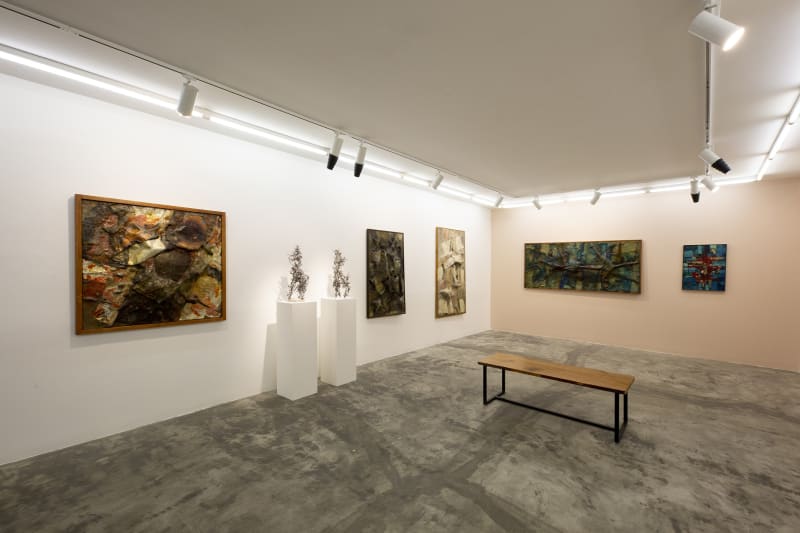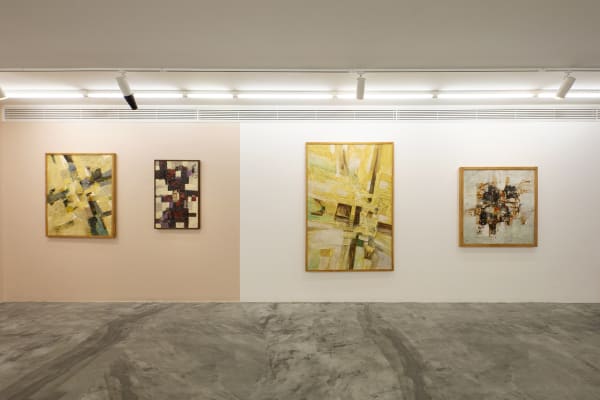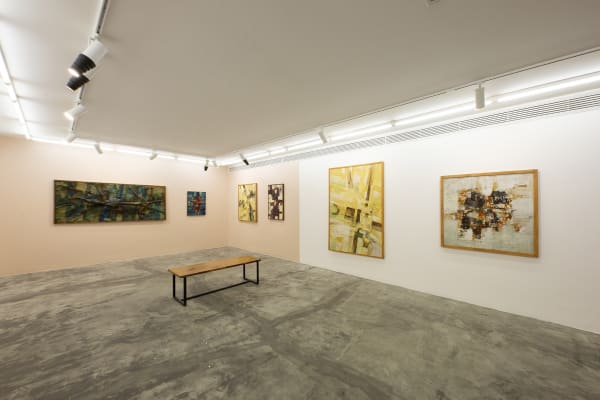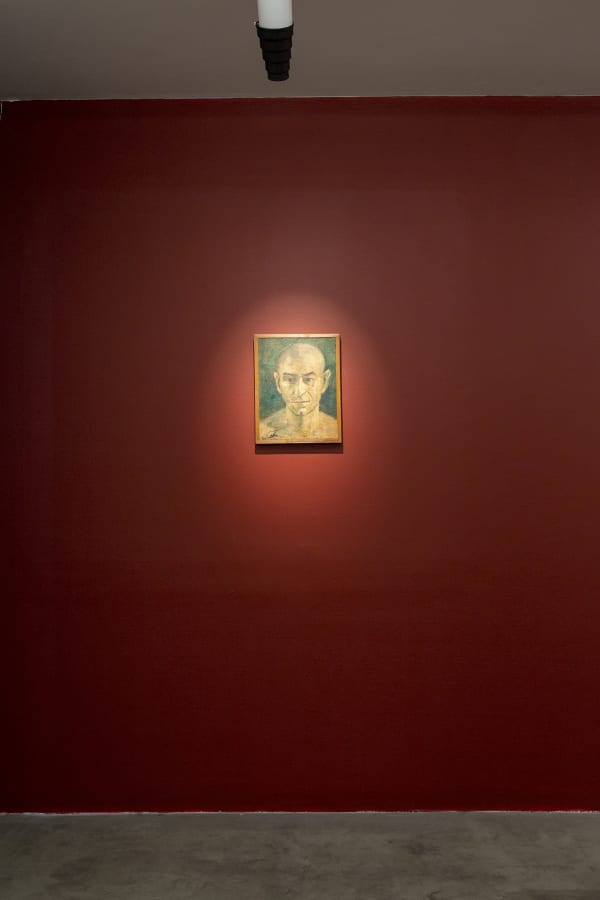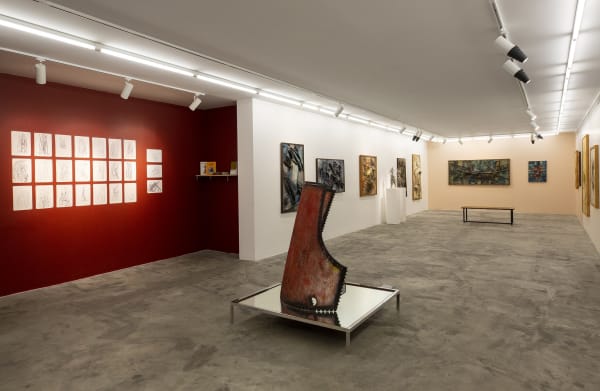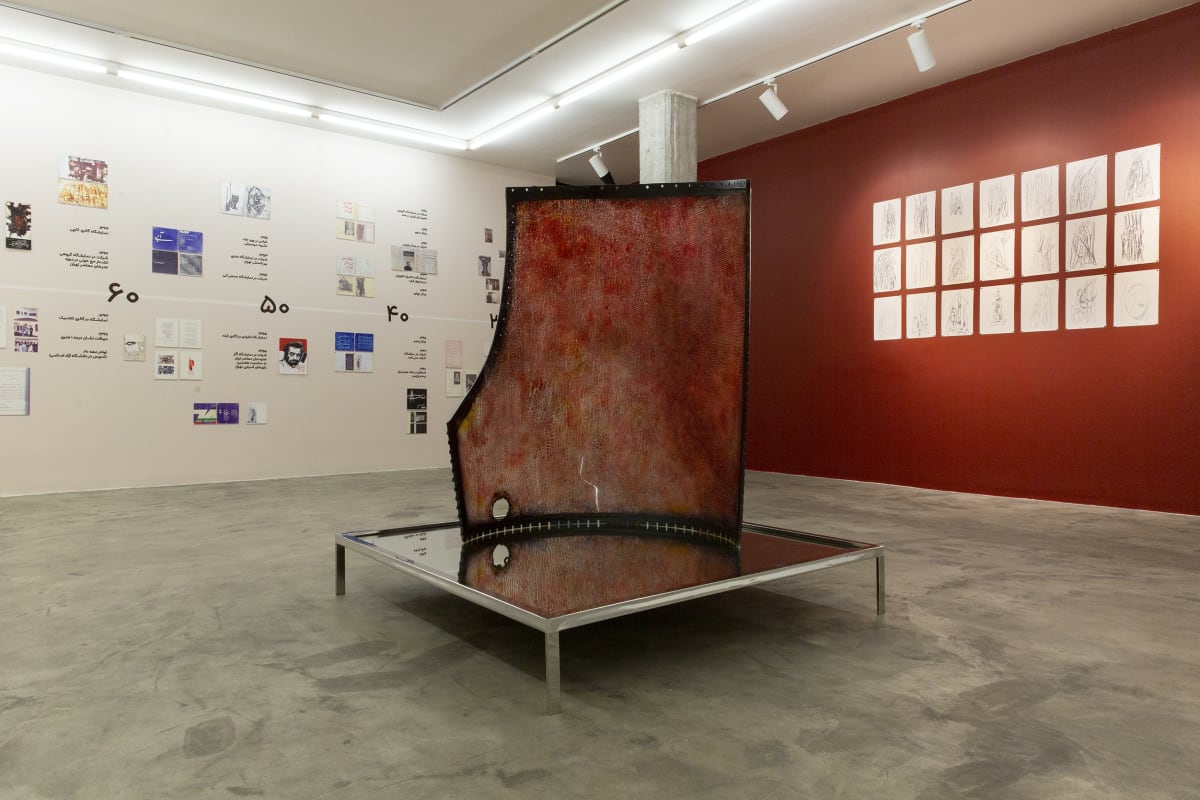A solo presentation of works by Changiz Shahvagh at +2.
-
 Installation View of Three Decades a solo presentation of works by Changiz Shahvagh.
Installation View of Three Decades a solo presentation of works by Changiz Shahvagh. -
 Installation View of Three Decades a solo presentation of works by Changiz Shahvagh
Installation View of Three Decades a solo presentation of works by Changiz Shahvagh -
 Installation View of Three Decades a solo presentation of works by Changiz Shahvagh.
Installation View of Three Decades a solo presentation of works by Changiz Shahvagh. -
 Installation View of Three Decades a solo presentation of works by Changiz Shahvagh.
Installation View of Three Decades a solo presentation of works by Changiz Shahvagh. -
 Installation View of Three Decades a solo presentation of works by Changiz Shahvagh.
Installation View of Three Decades a solo presentation of works by Changiz Shahvagh. -
 Installation View of Three Decades a solo presentation of works by Changiz Shahvagh.
Installation View of Three Decades a solo presentation of works by Changiz Shahvagh. -
 Installation View of Three Decades a solo presentation of works by Changiz Shahvagh.
Installation View of Three Decades a solo presentation of works by Changiz Shahvagh. -
 Installation View of Three Decades a solo presentation of works by Changiz Shahvagh.
Installation View of Three Decades a solo presentation of works by Changiz Shahvagh. -
 Installation View of Three Decades a solo presentation of works by Changiz Shahvagh.
Installation View of Three Decades a solo presentation of works by Changiz Shahvagh. -
 Installation View of Three Decades a solo presentation of works by Changiz Shahvagh.
Installation View of Three Decades a solo presentation of works by Changiz Shahvagh. -
 Installation View of Three Decades a solo presentation of works by Changiz Shahvagh.
Installation View of Three Decades a solo presentation of works by Changiz Shahvagh. -
 Installation View of Three Decades a solo presentation of works by Changiz Shahvagh.
Installation View of Three Decades a solo presentation of works by Changiz Shahvagh. -
 Installation View of Three Decades a solo presentation of works by Changiz Shahvagh.
Installation View of Three Decades a solo presentation of works by Changiz Shahvagh. -
 Installation View of Three Decades a solo presentation of works by Changiz Shahvagh.
Installation View of Three Decades a solo presentation of works by Changiz Shahvagh.
+2 presents "Changiz Shahvagh Three Decades of Works". The exhibition will open on Friday, September 10, 2021. "Changiz Shahvagh: Three Decades of Works" is arranged by Firouzeh Saghafi and Parmiss Afkhami in collaboration with Nabshi Center Museum*. It will be on view until Friday, September 24.
Born in Baku, Azerbaijan, in 1933, the future pioneering modern artist moved with his family to Tehran when he was three. He attended the Tehran School of Visual Arts in 1952 and entered the University of Tehran in 1957 to study Painting. Shahvagh is celebrated for the diversity and breadth of his approaches to art, the materials he employed, and the mediums he chose. He has left an indelible mark on the contemporary art of Iran, working variously as an advisor and executive at the Ministry of Culture and Arts, as a teacher, or as an exhibition organizer.
Shahvagh's works have appeared in many exhibitions inside and outside Iran, the most prominent being the biennials of Tehran, Venice, and Paris. He started his professional career by participating in a group exhibition at the Iran-America Society in 1956. He followed with an exhibition of his paintings and sculptures with Kuros Salahshur at Gallery Esthetique in 1958. He held 5 solo exhibition in his career and participated in more than 14 group exhibitions. He was twice (at the 3rd and 4th Biennial of Tehran) awarded the Medal of Distinction and financial assistance to travel to Italy and later he became a resident at the cité internationale des arts in Paris. The 1960s were Shahvagh''s most prolific years. Some of the best works of these years have appeared at the 4th Biennial of Tehran. Shahvagh returned from Italy and added to the diversity of the materials he worked with, including cement, iron, plexiglass and fiberglass.
In addition to his artistic creations, Shahvagh was active as a patron of the arts in many capacities, at the Ministry of Culture and Arts and other cultural organizations, as a graphic designer, and, following the Islamic Revolution of 1979, as a teacher and researcher at the university. Even though his activities slowed down in these years, he continued to experiment with a variety of materials. In the last two decades of his life, he created and showed works, continuing with his research on ceramics and teaching.
He died in Tehran in 1996.
The current exhibit is a selection of his works meant to bring out the diversity and complexity of the late artist's creations. The selection includes his paintings, reliefs, and sculptures created over the three decades of 1970s, 80s, and 90s. An archive of historical information on his various exhibitions will also be on view at this show to provide the viewer with an understanding of the various facets of Changiz Shahvagh's career.
* Part of the archival documents and images in this exhibition belong to Nabshi Center Museum.
